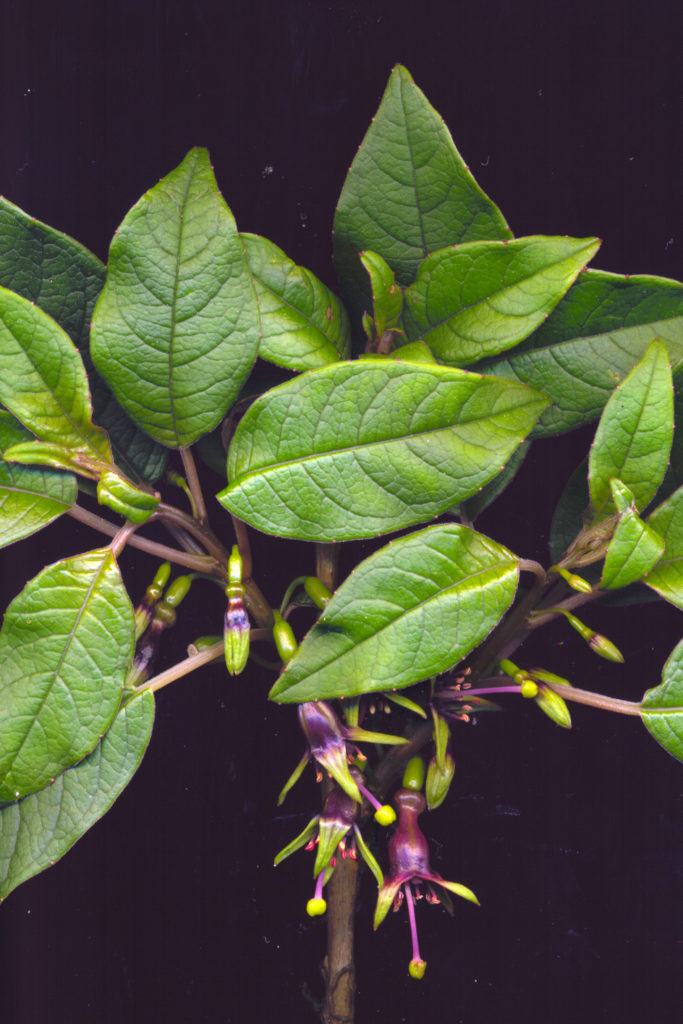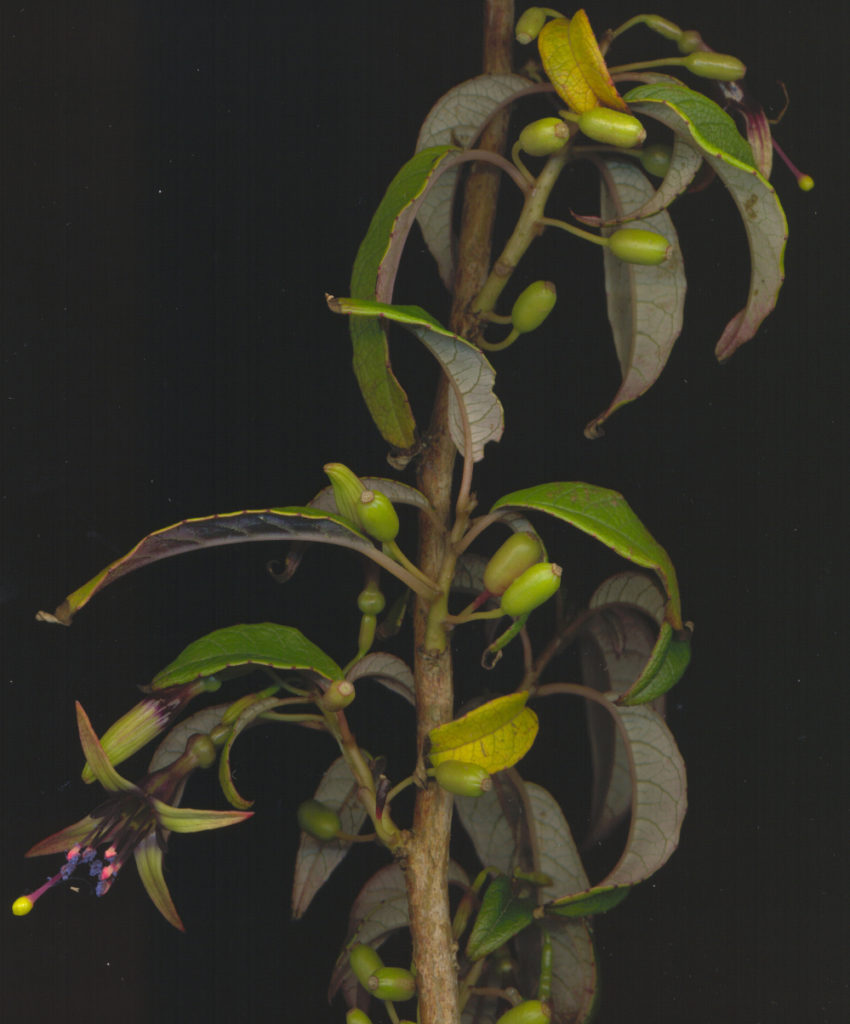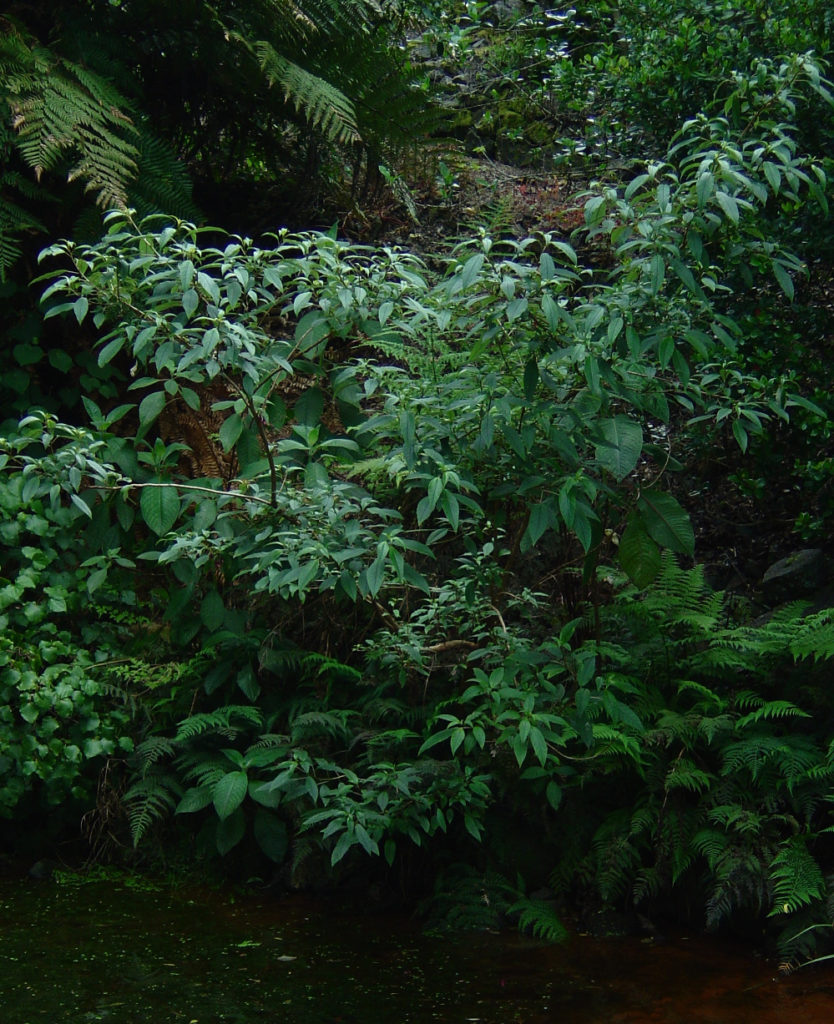 Kotukutuku in flower in December
Kotukutuku in flower in December
Kotukutuku flower mostly in December and within a month there is a profusion of berries on the trees. From a single flower comes a berry with up to 100 tiny seeds embedded in the succulent flesh.
 The hermaphrodite flowers grow straight out of mature wood
The hermaphrodite flowers grow straight out of mature wood the succulent berries are called konini. A great source of food for nesting birds
the succulent berries are called konini. A great source of food for nesting birds
There are two kinds of trees, having two kinds of flowers. Some are functionally female, having given up the ability to produce pollen, and some are hermaphrodite, with both male and female functions.
This poses the interesting question: what competitive advantages do each have and why are each strategy, equally successful?
 Typical kotukutuku habitat
Typical kotukutuku habitat
just above flood level on the stream bankWe see kotukutuku
all along stream and river banks, where the ground is perpetually
damp. Kotukutuku is pretty fussy though, it doesn’t cope at all
well with flooding over its roots, so it needs to be planted in the
wet seeps along streams but above any chance of being flooded.
Frost is not so much a problem for this, the world’s tallest fuchsia. The leaves might curl up and die in a heavy frost but usually they don’t last the winter anyway.
The stems are fine, sprouting fresh new growth once the chance of frost has passed.